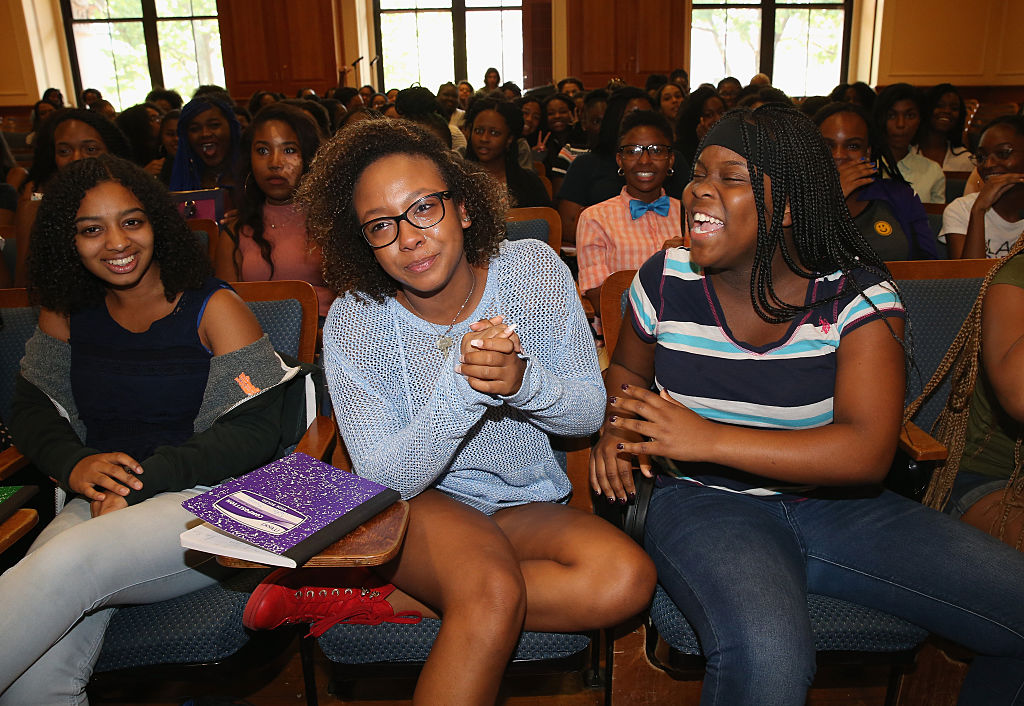In a February report conducted by the Pew Research Center, millennials are assessed based off of multiple indicators: education, employment, housing, family, voting and income and wealth. Despite this extensive research, there are gaps when it pertains to data highlighting the intersection of the millennial experience with African American narratives.
In a Nielsen report, it was noted that of the 83.1 million millennials living in America, 11.5 million or 14 percent of the millennial population are African Americans.
The New Republic reported this phenomenon, stating the "Black millennial, then, is composed of contradictions and ambiguity; her journey of tentative steps forward and horrific setbacks." The publication cited their experiences exist in a "so-called post-race era" marked by highs such as President Obama's nomination and lows such as police brutality against Rodney King, Hurricane Katrina and numerous police shootings which led to the rise of #BlackLivesMatter.
In a July report by the Pew Research Center, it noted the power of the #BlackLivesMatter hashtag saying in an analysis of public tweets, it "has been used nearly 30 million times on Twitter – an average of 17,002 times per day – as of May 1, 2018."
Make sure you're following Blavity:Politics on Instagram and join our daily newsletter to stay engaged and informed.
In a report by the Black Youth Project, data specific to the Black millennial experience were highlighted for those between the ages of 18-34.
In terms of education, Pew Research highlights how millennials are matriculating bachelor degrees or higher at greater rates than their Generation X and baby boomer counterparts at the same age by a 10 percent margin.
The Black Youth Project highlights how college enrollment had sharply increased from 24.5 percent in 1993 to 36.4 percent in 2012. Still, it notes there are also unseen factors that affect Black millennials when it comes to education including higher amounts of student loans, greater unemployment rates and discrimination in the workplace, among others.
In terms of employment, Pew Research showcases the following:
In 1966, when Silent Generation women were ages 22 through 37, a majority (58 percent) were not participating in the labor force while 40 percent were employed. For millennial women today, 72 percent are employed while just a quarter are not in the labor force. Boomer women were the turning point. As early as 1985, more young Boomer women were employed (66 percent) than were not in the labor force (28 percent).
The Black Youth Project highlighted unemployment rates as well as systemic issues such as workplace discrimination:
In the second quarter of 2015, unemployment rates were substantially higher for Black youth than for white and Latino youth. For instance, 16.6 percent of Black youth between the ages of 20 and 24 were unemployed, compared with 10.3 percent of Latino youth and 8.5 percent of white youth in the same age group.
Young Black women report experiencing discrimination in the workplace based on race and/or gender at considerably higher rates (35.6 percent) than white women (13.9 percent) and Latinas (21.2 percent).
Both reports go on to detail different narratives, Pew Research highlighting hard numbers that talk to the overall millennial experience and the Black Youth Project showing how an often marginalized segment does in comparison with added insight of additional stressors related to race, access to opportunities and other silent stressors.
Pew Research does report on religion in the Black millennial experience stating that "about six-in-ten Black millennials (61 percent) say they pray at least daily, a significantly higher share than the 39 percent of nonBlack millennials saying this."
Maybe this can be attributed to having to deal with the atrocities of slavery or other stressors that continue to persist when it comes to equal access and opportunities in places of work, housing, voting and a myriad of different spaces.
Now, check these out:
'SNL' Is Being Called Out For Skit Slamming Blackface After Using It For Decades
Join Blavity For A Special Tour Of This Exhibit On California's History Of Slavery
3 Ways Virginia Became A Political Dumpster Fire In Just Weeks
